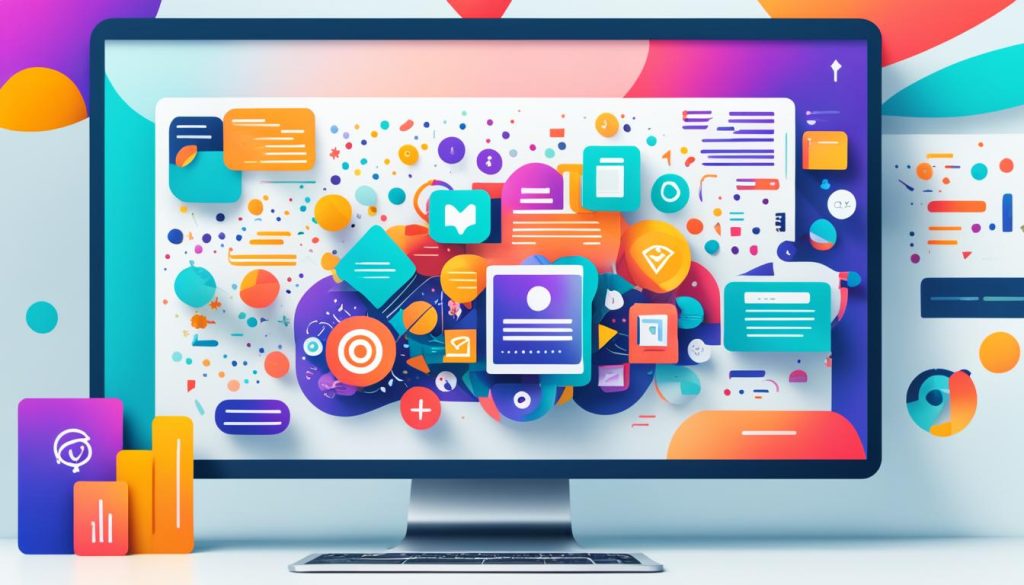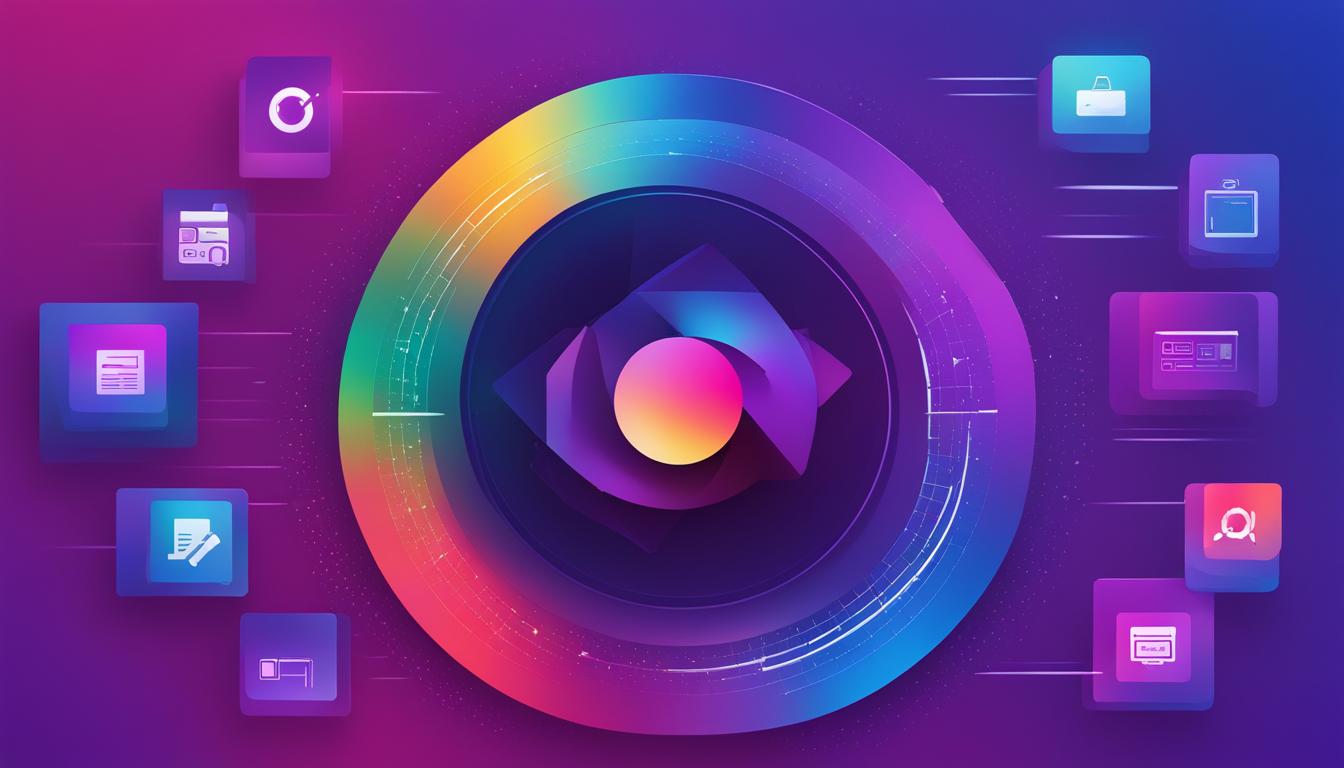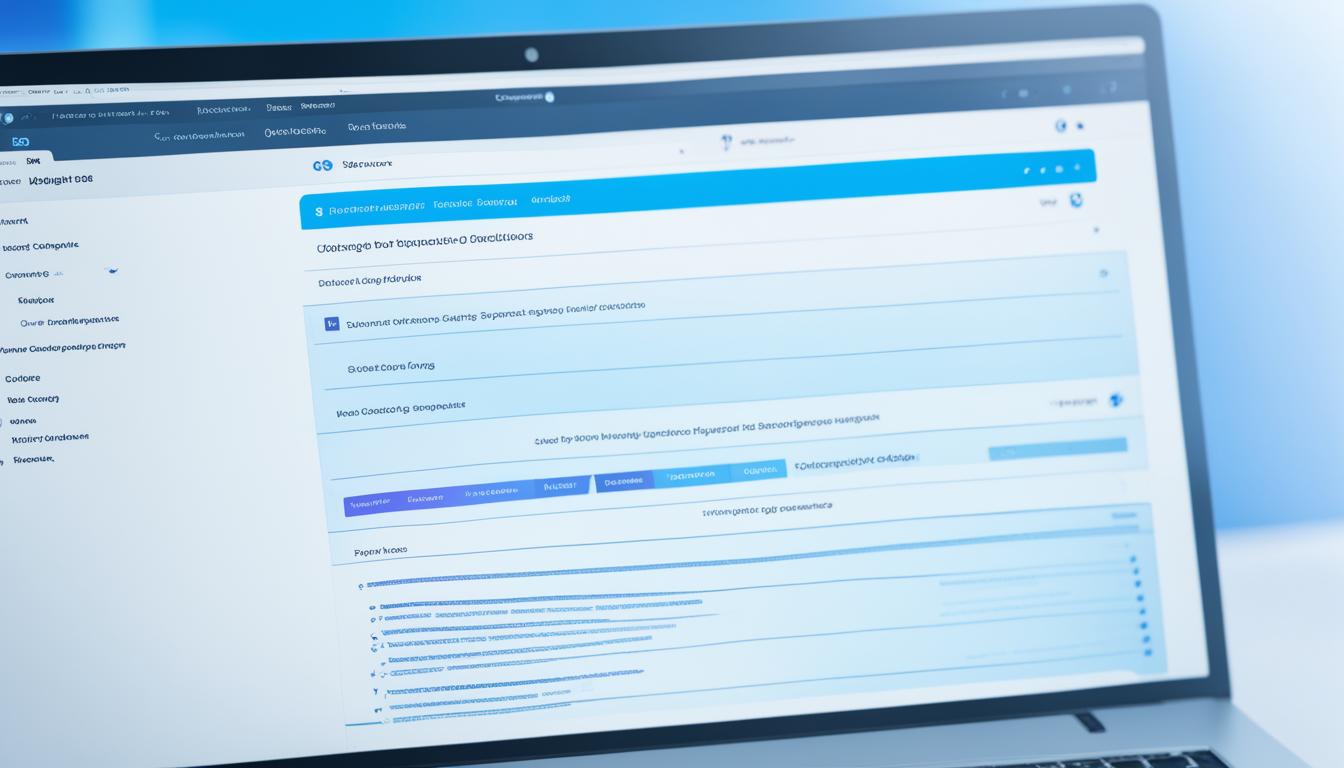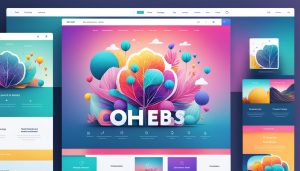Learn Web Design with Online Courses, Classes, & Lessons
Did you know that web design is a vital skill in today’s digital age? With over 1.9 billion websites worldwide, the demand for talented web designers continues to grow. Whether you’re looking to build an impressive portfolio, start an exciting new career, or enhance your existing skill set, learning web design with online courses, classes, and lessons can open new doors of opportunity.
Key Takeaways:
- Online courses, classes, and lessons offer a flexible and convenient way to learn web design.
- These resources cover a wide range of topics, including HTML and CSS training, UI/UX design, and responsive design tutorials.
- Choose a web design course that aligns with your educational goals and desired skill set.
- There are both free and paid online courses available, depending on your budget and level of commitment.
- Mastering the necessary tools and soft skills is crucial for success in the field of web design.
Choose the Web Design Course That Aligns Best With Your Educational Goals
When it comes to pursuing a web design course, it’s essential to find one that aligns with your educational goals and equips you with the necessary skills. As you explore different options, consider the specific areas of web design that interest you and the skills you want to acquire. Whether you’re passionate about front-end web development, proficient in HTML and CSS, or fascinated by user experience design, there’s a course out there that caters to your interests and aspirations.
Web design courses cover a broad range of topics, from the fundamentals of web development and design principles to more specialized areas like web development tools, computer programming, and interactive design. By identifying the skills you want to develop, you can make an informed decision about the course that best aligns with your career goals in web design.
Front-end web development courses delve into the technical aspects of building websites, teaching you how to create user-friendly interfaces and implement HTML and CSS effectively. These skills are crucial for designing visually appealing and functional websites that meet industry standards.
Web design courses, on the other hand, provide a comprehensive understanding of design principles and best practices. They teach you how to create visually stunning layouts, choose appropriate color schemes and typography, and optimize websites for a seamless user experience. These courses often include modules on responsive design, ensuring that your websites look and function flawlessly across various devices.
If you’re interested in the programming side of web design, courses that cover computer programming and scripting languages like JavaScript can enhance your skill set. These courses equip you with the knowledge and techniques required to develop dynamic and interactive elements on websites, such as animations and interactive forms.
Lastly, if you’re passionate about user experience (UX) design, look for courses that focus on this aspect. UX design courses dive deep into understanding user behavior, conducting user research, and creating intuitive interfaces that prioritize usability. These courses often incorporate design thinking methodologies and teach you how to wireframe and prototype your designs using tools like Adobe XD or Invision Studio.
The Best Free Online Web Design Courses for Beginners
If you’re new to web design and looking to gain a solid foundation in the basics, there are several free online courses available that can help kickstart your learning journey. These courses cover various essential topics, including web design basics, HTML and CSS, web structure, typography, media elements, styling basics, layout basics, and responsive design. By taking advantage of these free resources, beginners can acquire the knowledge and skills necessary to create visually appealing and functional websites.
One notable free online course is “Web Design for Beginners: Real World Coding in HTML and CSS” offered by Udemy. This course provides in-depth instruction on HTML and CSS, teaching you how to structure web pages, style them with CSS, and create responsive designs.
Another recommended option is “Introduction to Web Design” by Alison. This course covers the fundamentals of web design, including typography, color theory, and layout techniques. It also includes interactive exercises and quizzes to reinforce your learning.
For those looking to learn from industry professionals, Mozilla Developer Network (MDN) offers a wide range of free web development resources and tutorials. Their web design and development guides provide comprehensive explanations and examples for beginners to follow.
Remember, these free online courses are a great starting point, but they may not provide the same level of in-depth instruction and support as paid courses. However, they offer valuable knowledge and practical skills that can help you get started in your web design journey.

Explore the following free web design courses:
- Web Design for Beginners: Real World Coding in HTML and CSS
- Introduction to Web Design
- Mozilla Developer Network (MDN) web development guides
The Best Paid Online Web Design Courses for Advanced Learning
Are you ready to take your web design skills to the next level? If you’re looking to delve deeper into the world of web design and expand your skill set, paid online courses can provide advanced learning opportunities. These courses offer in-depth instruction and guidance from industry experts, allowing you to refine your web design skills and stay up-to-date with the latest trends and technologies.
Here are some of the key topics covered in the best paid online web design courses:
- Web Design Basics: Build a strong foundation in web design principles.
- HTML and CSS: Learn the fundamentals of coding and styling.
- Responsive Design: Create websites that adapt seamlessly to different screen sizes and devices.
- Flexbox: Explore the flexible box layout module for designing responsive web pages.
- Bootstrap: Discover the popular front-end framework for building responsive websites.
- Wireframing: Learn how to create wireframes as a visual representation of website structure.
- CSS Animations: Add movement and interactivity to your web designs.
- CSS Grid Layout: Master the CSS grid system for creating complex and responsive website layouts.
Investing in a paid course allows you to access comprehensive resources, hands-on projects, and personalized feedback. You’ll have the opportunity to work on real-world projects and apply your newly acquired skills to practical scenarios.
Expand your horizons and take your web design career to new heights with the best paid online courses available. Enroll today and unlock your full potential as a web designer!
Upskill with the Best Paid Online Web Design Courses:
| Course Name | Platform | Duration |
|---|---|---|
| Web Design for Everyone | Coursera | 6 weeks |
| HTML and CSS Fundamentals | Udemy | 4 hours |
| Responsive Web Design | LinkedIn Learning | 3 hours |
| Advanced CSS Techniques | edX | 5 weeks |
| Web Design with Bootstrap | Skillshare | 2 hours |
Mastering the Tools and Soft Skills for Web Design Success
In addition to learning the technical skills required for web design, it’s essential to master the necessary tools and develop soft skills that contribute to success in the field.
As a web designer, I often utilize a variety of web design tools to enhance my workflow and create visually appealing websites. Tools such as graphic design software, interaction design tools, illustration software, and photo editing programs play a crucial role in bringing my creative vision to life. Adobe XD and Invision Studio are popular choices among professionals in the industry, offering robust features and intuitive interfaces.
Another important aspect of web design is creating a local development environment. The ability to set up a local server and work on projects offline enables me to test and iterate without affecting the live website. This helps me ensure that everything is functioning as intended before deploying it to the web.
In addition to mastering the technical tools, familiarity with CSS frameworks and platforms like WordPress can significantly boost a web designer’s efficiency. CSS frameworks provide pre-built styles and components that can be easily implemented, saving time and effort. WordPress, on the other hand, offers a user-friendly content management system that allows for efficient website creation and management.
While technical skills are vital, developing soft skills can also greatly contribute to web design success. Understanding consumer psychology helps me create user-friendly interfaces that resonate with the target audience. I incorporate navigation patterns and design elements that appeal to user preferences and enhance the overall user experience.
Another essential soft skill is negotiation tactics. As a web designer, I often collaborate with clients and stakeholders, and being able to effectively communicate and negotiate ensures that both parties are satisfied with the final product. This includes discussing project timelines, budgets, and scope of work. Additionally, the ability to create persuasive client proposals showcases professionalism and fosters confidence in potential clients.

Web Design Tools and Soft Skills Overview:
| Web Design Tools | Soft Skills |
|---|---|
| Graphic design software | Consumer psychology |
| Interaction design tools | Negotiation tactics |
| Illustration software | Client proposals |
| Photo editing programs | |
| Adobe XD | |
| Invision Studio | |
| Local dev environment software | |
| CSS frameworks | |
| WordPress |
What Qualifications Are Needed to Be a Web Designer?
When it comes to web design, formal qualifications like university degrees are not as crucial as in some other industries. Instead, web designers are primarily evaluated based on their portfolio of previous projects. This portfolio should showcase a range of skills, including frontend design, back-end development, and the implementation of cutting-edge elements such as typography, white space, animations, and icons.
Frontend design involves creating the visual elements and user interfaces of a website, while back-end development focuses on the behind-the-scenes functionality and database management. By demonstrating proficiency in both areas, web designers can showcase their ability to create cohesive and effective websites.
In addition to technical skills, attention to detail and a good eye for aesthetics are essential. Designers should have a strong understanding of typography and how to use it effectively in their designs. They should also be skilled in utilizing white space to create clean and visually appealing layouts.
Furthermore, web designers should keep up with the latest industry trends and be able to incorporate cutting-edge elements into their projects. This includes staying updated on new animation techniques and using icons and graphics that complement the overall design. Platforms like Dribble and Behance can provide inspiration and examples of successful portfolio sites that utilize these design elements effectively.
Building a strong portfolio is crucial for web designers to showcase their skills and attract potential clients or employers. By highlighting previous projects that demonstrate their expertise in frontend and back-end development, cutting-edge elements, typography, white space, animations, and icons, web designers can stand out in a competitive industry.
Top Web Design Courses for Skill Development
To help you make an informed decision about which web design course to take, here is a list of some of the top online courses available. These courses are offered by reputable institutions and cover a wide range of topics, including front-end web development, user experience design, graphic design, and web development tools.
- “Web Design for Everybody: Basics of Web Development & Coding” from the University of Michigan: This comprehensive course provides a solid foundation in web development and coding. It covers HTML, CSS, and JavaScript, as well as topics like responsive design and web accessibility. By the end of the course, you’ll have the skills to create visually appealing and user-friendly websites. Learn more.
- “Google UX Design” by Google: This course focuses on user experience (UX) design principles and practices. You’ll learn how to create intuitive and engaging user interfaces, conduct user research, and optimize website usability. The course includes real-world examples and hands-on exercises. Learn more.
- “Graphic Design” from the California Institute of the Arts: This course explores the principles of graphic design and visual communication. You’ll learn essential design concepts such as composition, typography, color theory, and branding. Through practical projects, you’ll develop your design skills and create professional-level graphics.Learn more.
These are just a few examples of the top web design courses available. Depending on your specific interests and career goals, there are many other options to explore. Remember to consider the reputation of the institution, course content, and reviews when making your decision. Happy learning!
Conclusion
Learning web design through online courses, classes, and lessons provides a flexible and accessible way to acquire the necessary skills. Whether you’re a beginner or an experienced professional, there are numerous resources available to help you enhance your knowledge and stay up-to-date with the latest trends and technologies in the field.
By choosing the right course and mastering the necessary tools and soft skills, you can embark on a successful career in web design. Online courses offer a variety of options for learning, from free courses that provide a solid foundation in web design basics to paid courses that offer advanced learning opportunities.
Additionally, by mastering the tools and software used in web design, such as graphic design programs and development environments, you can create visually appealing and functional websites. Developing soft skills, such as client communication and proposal writing, also contributes to your success as a web designer.
Whether you’re interested in front-end design, user experience, or back-end development, online courses provide the knowledge and skills necessary to excel in the field of web design. So start your journey today and take advantage of the online resources available to enhance your web design skills.
FAQ
What are the best online resources for learning web design?
How do I choose the right web design course?
What are some free online web design courses for beginners?
Are there any paid online web design courses for advanced learning?
What tools and soft skills are important for web designers?
Do I need formal qualifications to become a web designer?
What are some top web design courses for skill development?
- Shop for Server & Workstation Systems & more - February 25, 2025
- IP Geolocation API and IP Location Lookup Tools - February 24, 2025
- What is GoDaddy? Everything You Need to Know in 2024 - February 23, 2025





















Post Comment
You must be logged in to post a comment.